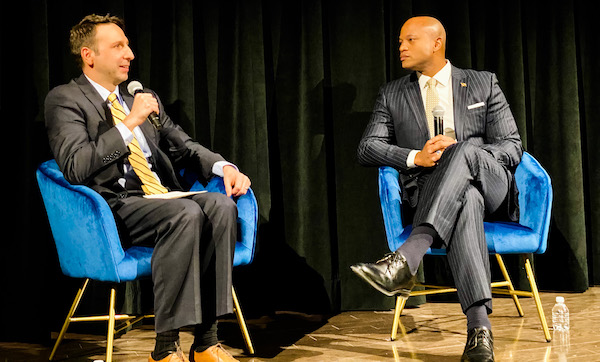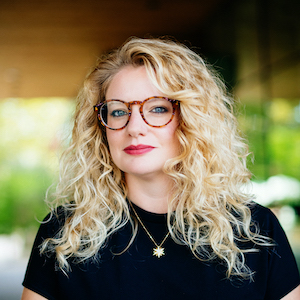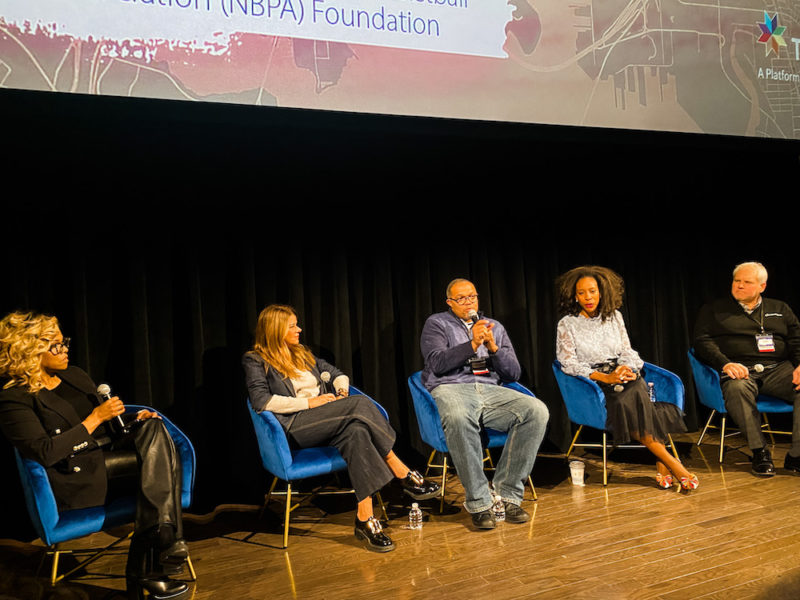Sector leaders from throughout Baltimore two weeks ago gathered at a North Avenue corner, the former site of the Chicken Box that now houses the landmark redevelopment of the Parkway Theatre, to collaborate at the Baltimore Together Summit. Panelists representing entities as varied as a West Baltimore bakery, Exelon and the future governor’s office sketched a plan for what was termed Baltimore’s coming renaissance, with an audience responsible for making decisions that will determine the city’s future.
As covered during its September 2021 launch and period for public comment, Baltimore Together is a comprehensive economic development strategy (CEDS) plan completed every five years for the U.S. Economic Development Administration. That means it’s official: It’s the plan for how it will seek and deploy federal grants and other funding across aligned stakeholders. Now in Year 2, the plan was orchestrated and stewarded as a public-private initiative of the Baltimore Development Corporation. The goal is to arrive at a community-owned and intersectional plan to build a more inclusive and prosperous Baltimore.
The group of some 100 leaders, including many from the innovation and tech community, thus undertook discussions on economic access, workforce development, real estate, youth engagement, small business growth and entrepreneurship. BDC President and CEO Colin Tarbert opened the summit by spelling out the plan’s four key strategies: Work Together, Invest in People And Places, Build from Strength and Compete to Succeed. He also emphasized that Baltimore’s great potential lies in its reality as an “asset-driven city.”
As an audience member, this stuck with me. Beyond the usual “assets” — access to world-class universities, talent from three-letter agencies, proximity to DC, a beautiful harbor and affordability — what did that really mean?
The concept’s true meaning became clearer throughout the day: We once thought we could get by on our proximity to other cities and affable charm. We can’t. We have to start owning our reasons for being great. They cannot be comparative and must be unified from the community.
Read the full Baltimore Together planHere are some key takeaways and turns of phrase that since the convening stayed with me:
Why does a metro like Baltimore matter?
It’s the direction of the power structure. Federal and state governments are organized vertically, cities and metros are organized horizontally. “Power is here, it is shifting down in the 21st level to this level,” said keynote speaker and economist Bruce Katz. “This is a horizontal level, where there could be radical collaboration. … [Metros] are where problems get solved, you are the problem solvers.”
How do we rewrite a narrative?
Former Mayor Stephanie Rawlings-Blake asked a panel what they would do with a magic wand. The panelists’ answers were all about our narrative.
“People, individuals, must take personal accountability for their lives,” said Baked in Baltimore owner April Richardson. “Each of us have innate responsibility to look at how we’re showing up. It’s in the small things that we do that help to carry the narrative of how our city is.”
“Why is it that we have one of the highest spending powers but yet our money doesn’t go back into the city of Baltimore?” Richardson added. “Buy local. Small things. Because in order to change the narrative, you’ve got to start with the part that you’re writing. We can no longer rely on our politicians because they are here for only four or maybe eight years. We are here for a lifetime.”
Why Baltimore?
In the words of David Bramble, managing partner of MCB Real Estate and the redeveloper of Harborplace, “Baltimore is mis-priced” and we have to be proud and loud about our assets.
“Our job is to paint the opportunity, to show outside investors what’s here, what’s going to support these projects, how are these things going to work — that’s one part of our job,” Bramble said. “Then the other part of our job is to convince ourselves, because a lot of people in Baltimore were often so negative: ‘Oh this will never happen, you can’t do something in this Black area, it won’t work.’ And that’s not just people from outside, that’s people in our own neighborhoods who work against the things we’re trying to do.”

Governor-elect Wes Moore (right) speaks with BDC President Colin Tarbert. (Photo by Margaret Roth Falzon)
What holds us back?
“We have got to address the situation where we have people who are working jobs, sometimes multiple jobs, and still living at or below the poverty line,” Governor-elect Wes Moore said during a fireside chat with Tarbert. “The ALICE population — we talk about people who are asset-limited, income-constrained and employed. We have to actually incentivize work by making sure people are getting paid a fair wage for the work that they are doing, and knowing that we are working in partnership with our small businesses to ensure that that can actually happen — and that we have to focus on an ownership society.”
What’s the metaphor to blaze into your mind?
The phrase “A rising tide raises all ships” sometimes elicits a response: “What about those who don’t have boats?”
A better phrase that I’ll never forget came from Dionne Joyner-Weems, chief energy officer of Audacity Group: “If one section of our city is struggling, if one section of our region is standing still, then sooner or later low tides drop all ships. Understand that we are connected and that it is only through collaboration that we are going to see the greatness that is Baltimore.”
The quotes above reflect how often in these kinds of conversations, Baltimoreans, transplants and locals alike share versions of a similar dream: a city that we’re proud of holistically, that outsiders see through our hopes; and a diverse, inclusive and resilient model for an equitable economy. But the clock is ticking.
“If we can’t do it in the next couple years, in terms of really changing Baltimore in a transformative way, we might not ever do it,” said Tarbert.
We’ve had such moments before. Innovation Village. Cybertown USA. Light City. What’s different this time? These efforts were isolated to one group’s efforts.
From this writer’s perspective, Baltimore Together may be the first time the city’s communities can come together holistically, inclusively, with a unified plan to rewrite the narrative.
Some questions certainly remain on the table: How and who will measure the progress metrics against the plan? How will the data on this progress be shared transparently and publicly? In a city known for its squabbles, how will we hold ourselves accountable for working together?
This convening, the hopeful first of an annual event, affirmed that the Baltimore Together plan could be the thing that keeps us standing on common ground to build the city we want to live in.
Watch the full Baltimore Together Summit livestream below, and reach the organizing team at info@baltimoredevelopment.com.
Before you go...
Please consider supporting Technical.ly to keep our independent journalism strong. Unlike most business-focused media outlets, we don’t have a paywall. Instead, we count on your personal and organizational support.
3 ways to support our work:- Contribute to the Journalism Fund. Charitable giving ensures our information remains free and accessible for residents to discover workforce programs and entrepreneurship pathways. This includes philanthropic grants and individual tax-deductible donations from readers like you.
- Use our Preferred Partners. Our directory of vetted providers offers high-quality recommendations for services our readers need, and each referral supports our journalism.
- Use our services. If you need entrepreneurs and tech leaders to buy your services, are seeking technologists to hire or want more professionals to know about your ecosystem, Technical.ly has the biggest and most engaged audience in the mid-Atlantic. We help companies tell their stories and answer big questions to meet and serve our community.
Join our growing Slack community
Join 5,000 tech professionals and entrepreneurs in our community Slack today!

The person charged in the UnitedHealthcare CEO shooting had a ton of tech connections

From rejection to innovation: How I built a tool to beat AI hiring algorithms at their own game

Where are the country’s most vibrant tech and startup communities?



